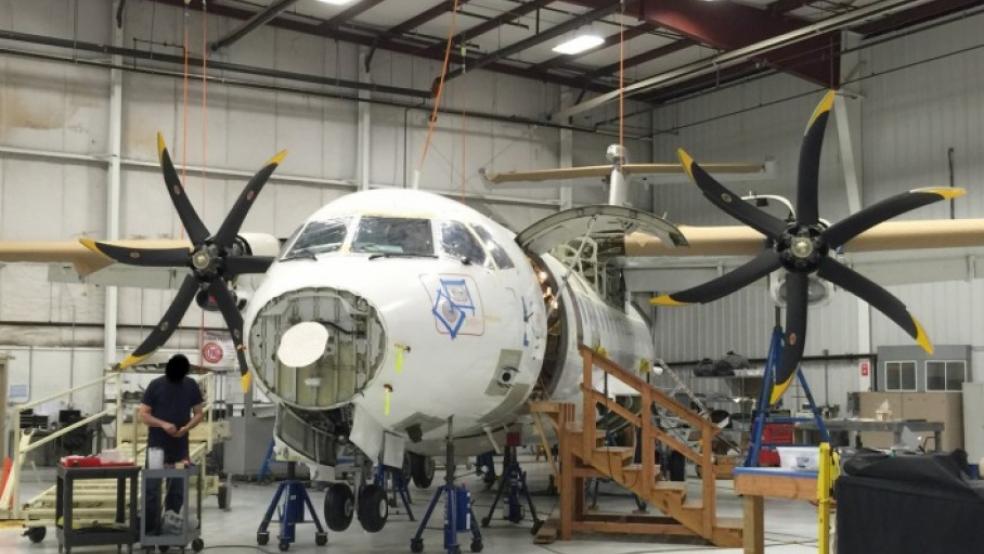Q. When is an airplane that has cost the federal government $86 million not an airplane?
A. When it’s never flown.
A high-tech drug surveillance plane purchased by the Drug Enforcement Administration for $8.6 million in 2008 and upgraded by the Defense Department was designed to gather intelligence for counter-narcotics operations in Afghanistan. But it will never be able to fulfill its intended mission, according to a new report from the Justice Department’s Inspector General.
Related: The Pentagon Overpaid $425 Million of Taxpayer Money for Official Travel
“We found that more than seven years after the aircraft was purchased for the program, it remains inoperable, resting on jacks in Delaware and has never flown in Afghanistan,” IG Michael Horowitz said in an official video.
Two reasons the effort to revamp the ATR 500 aircraft failed, part of DEA’s Global Discovery Program to fly in an active combat zone, are that the agency missed every single deadline over seven years and squandered the allotted budget.
“The aircraft was originally estimated to cost $22 million, but it ended up costing taxpayers nearly four times the projected amount and has missed every intended delivery date,” according to Horowitz, who added that the agency wound up ending its airborne operations in Afghanistan in July 2015, before the plane was delivered.
Related: Here’s the New, Secret Warplane Everyone Will Soon Be Talking About
The DOJ audit also found that the DEA didn't follow federal procedures when it purchased the aircraft, doling out about $3 million more than it had previously estimated for the $8.6 million aircraft. Meanwhile, the Pentagon spent $2 million to build a hangar in Afghanistan to house the plane—a hangar that has never been used and likely will remain empty, according to the IG.
DEA now intends to use the plane to fly friendly skies in the Caribbean and Central and South America, the report states. But even in the best case scenario, the plane won’t be airborne until June 2016 – four years later than expected and with fewer less bells and whistles than drug and defense officials planned.
The IG report made 13 recommendations to DEA to boost its oversight of aviation operations and the problem-plagued program.
Related: Half a Trillion for the Pentagon? Why Defense Spending Is Only Going Higher
In response to the scathing report, DEA agreed with eight of the suggestions, but it also not-so-subtly placed the blame at the Pentagon’s feet, arguing that based on previous, successful experiences utilizing department contractors to modify its aircraft, it "had no indication that the Global Discovery modification would entail significant delays and problems that ultimately occurred."





